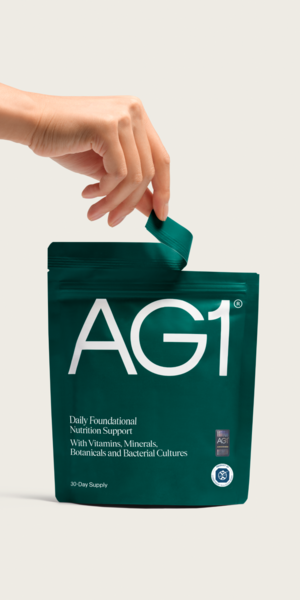Real resolutions

THE EXPERT
Lisa Sanfilippo is a body-mind yoga therapist, teacher, and counsellor based in London, with public classes at Triyoga and the Life Centre teaching Depth Yoga (www.lisayogalondon.com).
When I held a mid-December straw poll of friends, colleagues and café staffers about new year’s resolutions for 2017, I was met with furrowed brows, quizzical looks and the usual suspects: eat less sugar, spend more time with the kids, start yoga, lose weight…
When I asked what they had resolved last year, more often than not I discovered their resolutions were exactly the same. Take Daria, for example, a 24-year-old Australian primary school teacher living in London, who had vowed to ‘eat healthier’. She lasted almost a month but, come February, it was all forgotten.
If you break – or even forget – your resolutions by the tail end of January, you’re not alone. When Bupa and ComRes surveyed around 2,000 British adults, the top three were to lose weight, get fitter and eat more healthily. But, by February, 66% of resolution-makers had abandoned their diet, exercise and eating plans. That number grew to 86% by the end of March. The result? A spiral of emotions ranging from resignation, to disappointment and even self-flagellation. Let’s face it: the diet, fitness and beauty industries can bank on our collective sense of inadequacy and shame. Every January, ‘new year, new you’ ads implying the old you isn’t good enough quickly get us reaching for new products and services to help us in our quest to be a better, more acceptable version of ourselves.
But the sense of failure and the effect of accrued broken resolutions often gives you the opposite experience to what you were seeking in the first place.
While letting yourself down can be demoralising and expensive, on the flip side, psychoanalysts such as HJ Schelzinger go so far as to tell us that ‘making and keeping a promise could be an act – if not the defining act – of moral maturity’.
In other words, keeping your resolutions can create a sense of integrity and self-respect that underpins success and spiritual right-on-ness that lasts all year long.
So how do you make mature, self-respecting resolutions? The key is to focus on the changes you deeply want to see in your life. If you really want balance and sustainable change, you can’t start with the superficial stuff. What’s more, brain research suggests that you know when you are making promises you won’t keep. You can state resolutions outwardly, but your brain responds differently when, on a deeper level, it’s not consistent with what you really believe and want. When that happens, with all the (seeming) will in the world, you break your promises to others… and yourself. The truth is, when we think we ‘should’ say or do something, most of us either rebel and do the opposite, or ‘forget’ our prior intentions.
Your daily actions, when they arise from a true sense of what’s important to you, lead to a more consistent kind of discipline. So focus on what really matters to you.
A resolution comes from two paradoxical sources: first, from breaking things down in the mind, and second, from holding an intention firmly in your heart and head. In essence, resolutions mostly aim to loosen negative or self-destructive patterns, so that you can feel, look or be better.
Generally, we all want the same things: to be healthy, to have ‘enough,’ to feel safe, valued, confident and loved. When you forget this and become distracted, you can end up with the opposite of what you’re looking for: frustrated, disappointed and possibly skint.
ONE STEP AT A TIME
In my personal practice, and from working with others for more than 15 years in yoga studios, in yoga therapy and, more recently, as a counsellor, it’s clear to me that what we all want is to get out of some pain, overcome bad habits and make positive life changes.
The first step is to face the discomfort with the way things have been. Change comes when we accept that things have not been working. Next, start getting a real, felt-sense of what ‘good’ feels like. Meditation teacher and co-founder of the London Meditation Centre, Jillian Lavender, calls this ‘following the charm’. For her, meditation is a ‘way of dispelling the stress that blocks our intuition and inner sense of knowing what to do, where to go, what to say and when to act’.
Research into transcendental meditation (TM), made famous by The Beatles in the 1960s, has shown that in TM the human body enters deep rest and shows signs of stress reduction. According to Jillian, ‘With these blockages out of the system, we can then truly see where the charm in our life lies.’
THE BIGGER PICTURE
Other successful approaches to changing your life also reflect the wisdom of following the ‘charm’, or connecting to something bigger.
Several 12-step programmes help people overcome addictions by believing in a higher power, experiencing group support or a connection to spiritual wholeness. The psychologist and therapist Peter Levine’s Somatic Experiencing technique uses a process called ‘resourcing’ to restore health and release trauma, through a sense of ease and other positive feelings. This gives enough nourishment for the difficult experiences to loosen and for new patterns to emerge.
So what would your resolutions look like if you started with a baseline of good-feeling, replacing the ‘bad’ thing with something ‘better’? One outcome is that it has the potential to create an internal consistency that can lead to positive, sustained self-care.
This year, when framing your resolutions, start with something that feels good. Begin with a vision, a felt-sense of what is right for you. Then get smart. Anchor your vision in your life (see Find Your Balance, left), and move towards what’s charming and what nourishes you. Then your resolution will reinforce happiness, good feelings and even – dare I say it – a sense of fun.
While I’m not claiming to have upheld every vision I set for myself on the eve of 2016, I’ve seen what works – focusing on the things that really matter to you. I promised myself one day off each week – no emails, research, classes or client sessions. My resolution was to enjoy life more, which meant seeing more art. So now, as I finish this article, I’m sitting in the café at the Royal Academy, waiting to meet a friend to visit the Abstract Expressionism exhibition. When you re-frame your intentions, you may start a resolution revolution, and become a happier person.
BE SPECIFIC
To succeed, make sure you choose a goal that is achievable and you set realistic time frames – whether daily, monthly or seasonal.
BUDDY UP
Pairing with a friend or loved one and going for a resolution ‘date’ can be a great way
to reinforce positives.
FIND YOUR BALANCE
How to build a Resourceful Resolution
RECONNECT
Sit quietly and watch your breath. Bring your mind back to a time when you felt good. What are the features of that period? What sorts of things are you doing? How are you interacting? What does it look and feel like?
MAKE A MINI VISION BOARD
Divide an A4 or larger paper into four parts – for home, work, relationships and body care (or other areas that make sense for you). Sketch simple symbols or write words that connect you to ways you might feel good in these areas of your life. You can also cut out images from magazines that relate to your vision.
FORMULATE YOUR GOALS – AND BACK-UP PLANS!
For each area, create a specific objective and consider how you will know when this is met. Hold these lightly as ways to ‘steer’ your actions for the year, so you will realise when you are veering away from your intentions. Prepare a list of supporting actions to move you back in the right direction.
RELATE RESOLUTIONS TO YOUR DAILY LIFE
When you create your resolution, close your eyes, breathe deeply and evenly. ‘Anchor’ it by relating it to a part of your body such as your heart or belly, and placing your hand there to physically connect with a sense of your resolution. Come back to that spot each day. Your ‘anchoring’ time can be when doing regular daily routines such as brushing your teeth, drinking your morning coffee, on your commute to work or after putting the kids to bed.
SEE INSPIRATION EVERY DAY
Find a symbol of your resolution, such as a statue, stone, small object or picture. Place it somewhere special in your home where you will see it daily. Or wear it as a pendant or ring to remind you of your intention.











